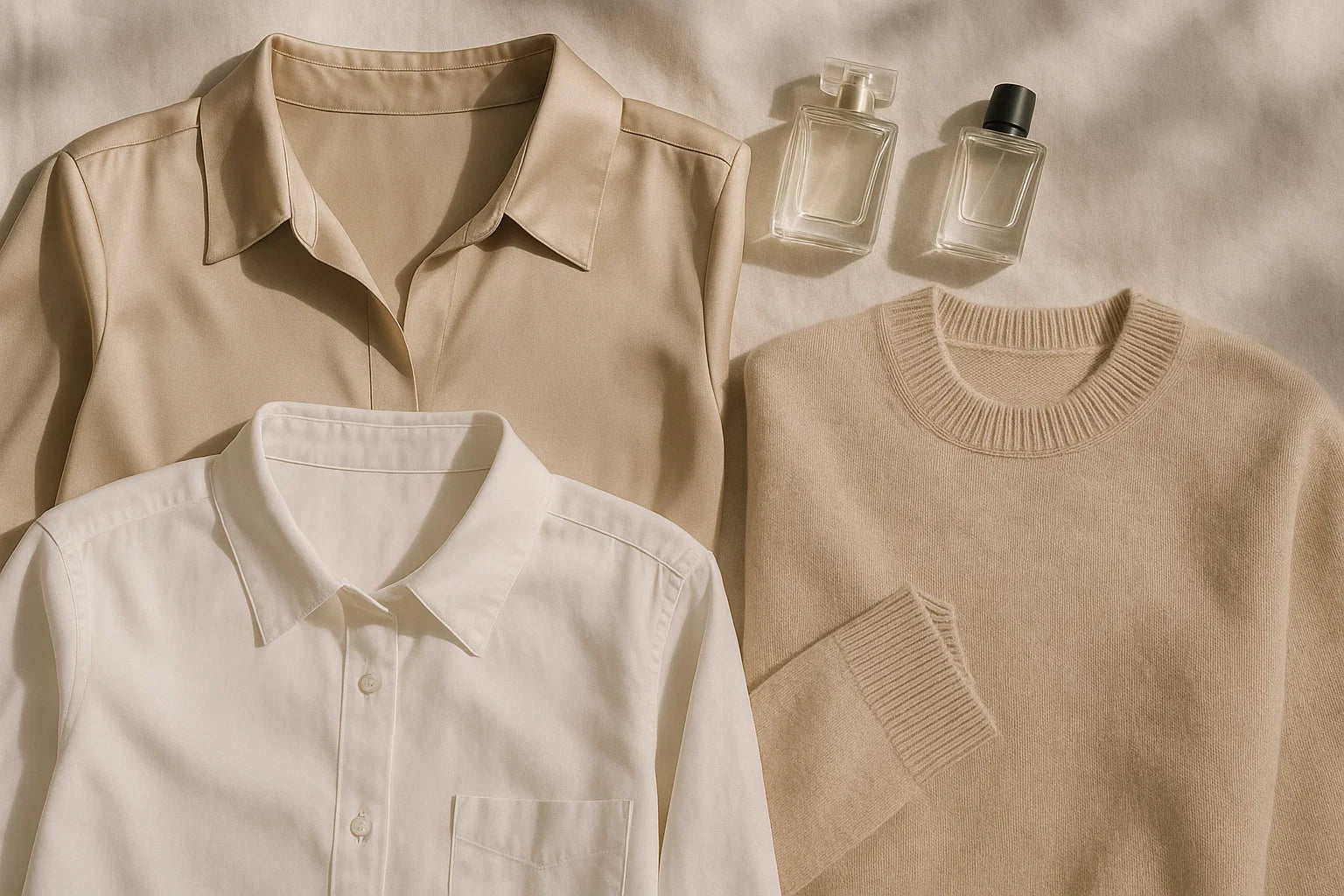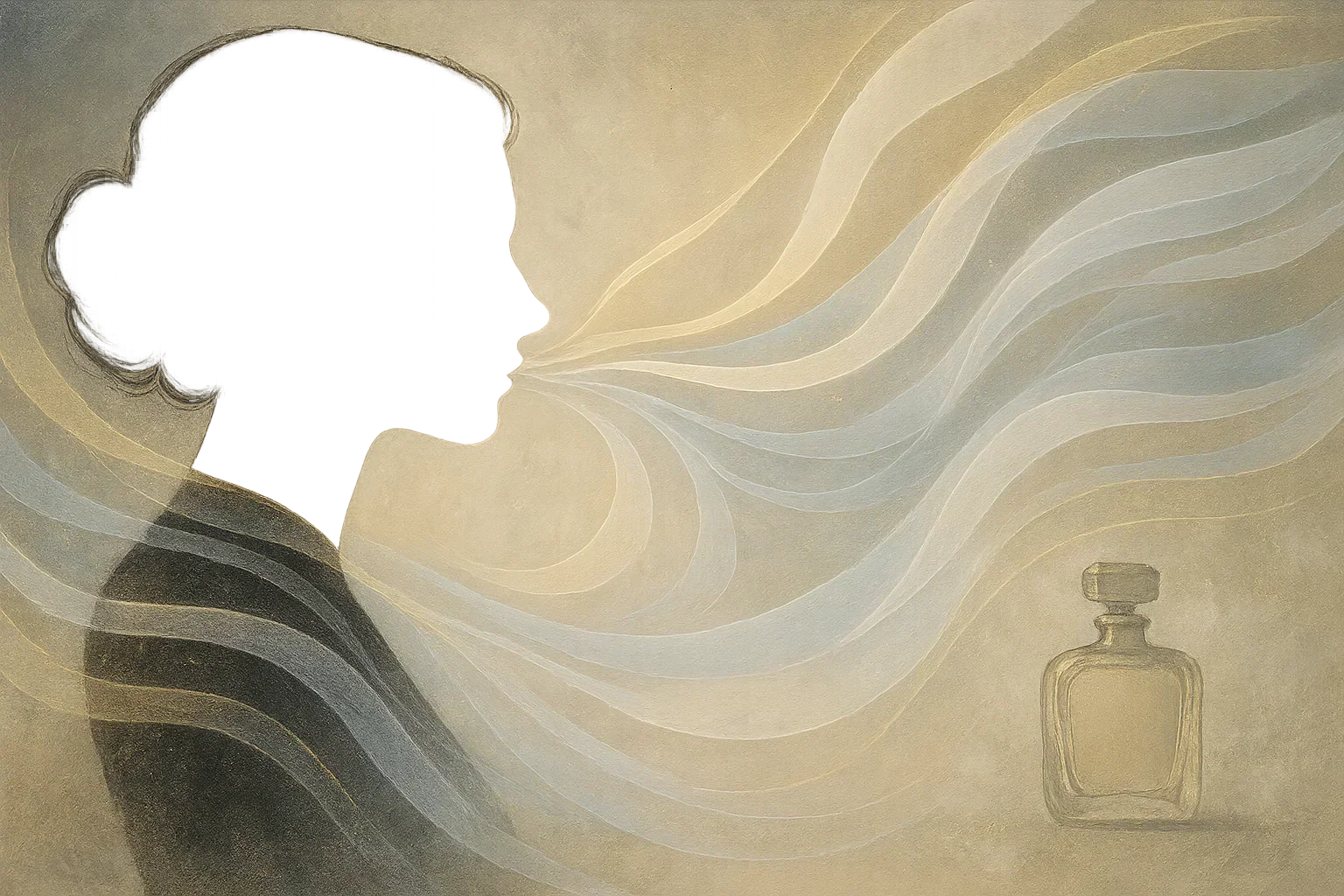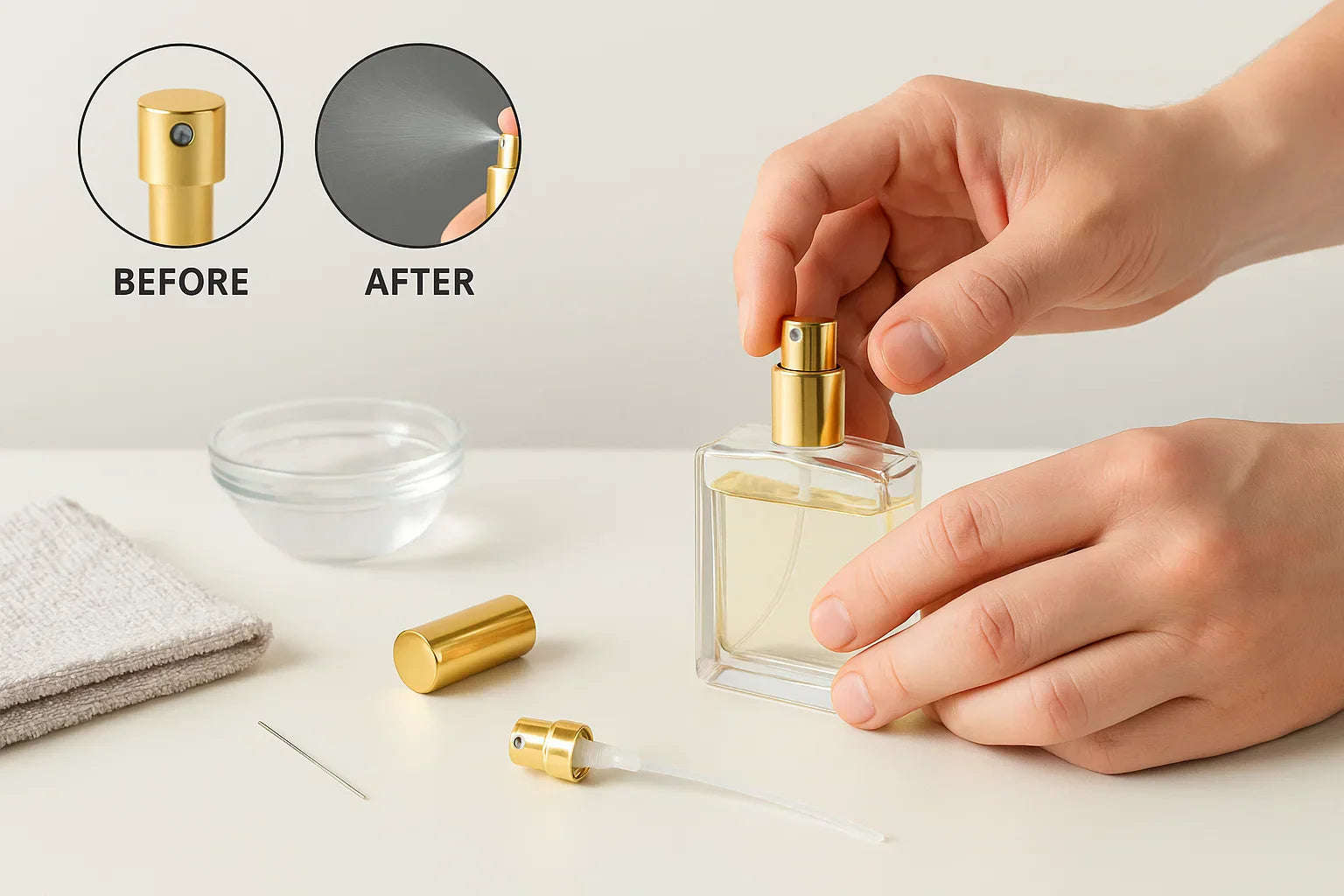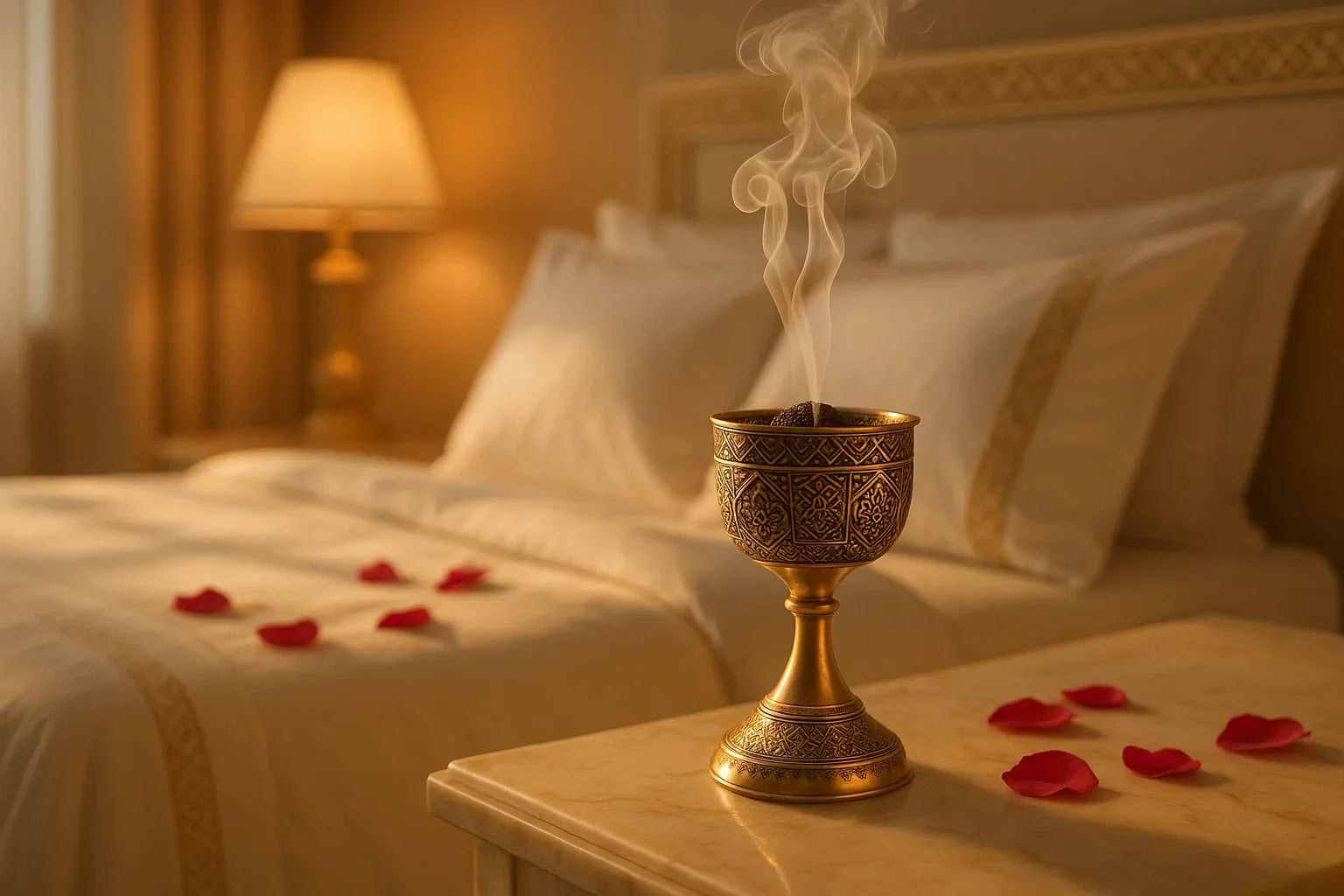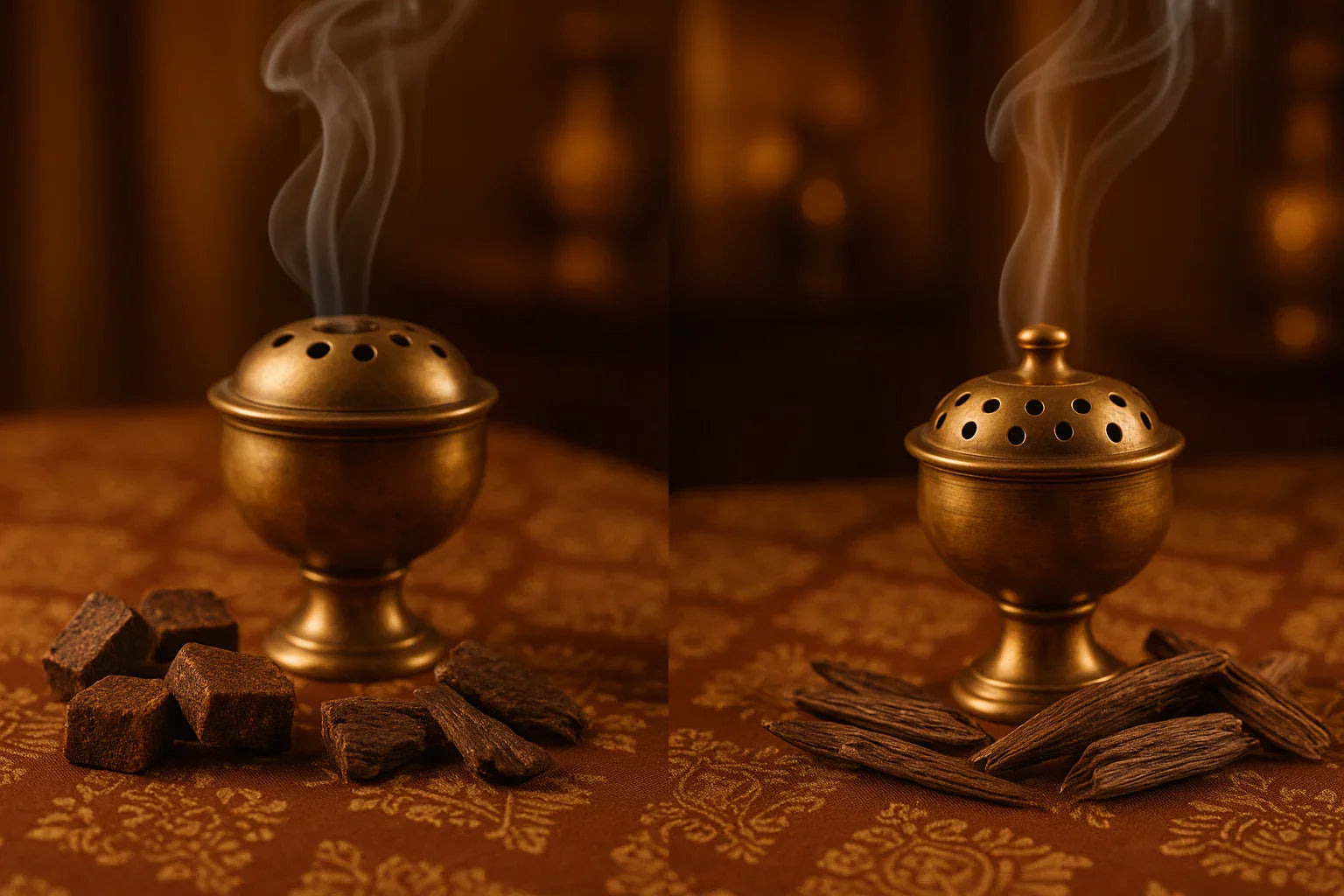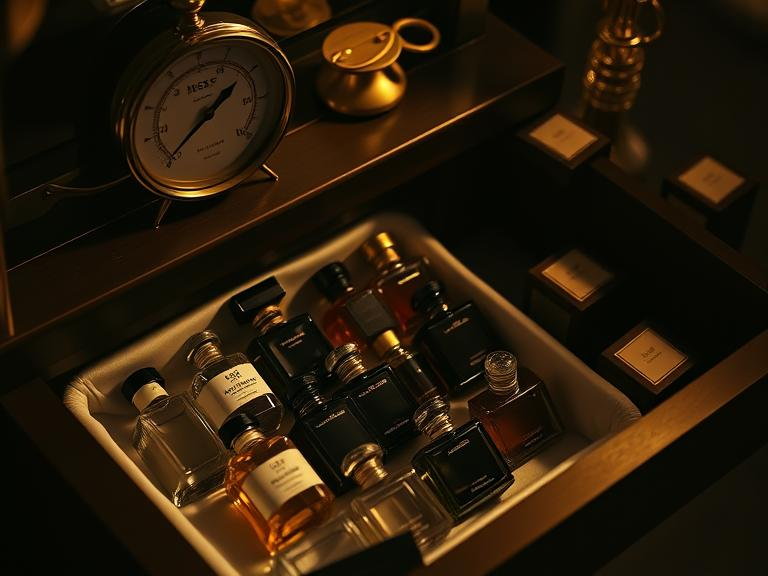
How to Properly Store Your Perfumes: The Ultimate Guide to Preserving Fragrance Quality
Introduction: Why Proper Perfume Storage Matters
You've invested in exquisite fragrances that perfectly express your personality and style—only to discover that your favorite scent now smells different or has lost its potency. The culprit? Improper storage. Many perfume enthusiasts don't realize that how they store their fragrances dramatically impacts their longevity, scent integrity, and overall performance.
With premium perfumes often costing hundreds of dollars per bottle, protecting these aromatic investments should be a priority. The good news is that with the right knowledge and a few simple adjustments to your storage habits, you can extend your perfume's lifespan by years while maintaining its intended scent profile.
The Science Behind Perfume Degradation
To understand how to properly store your perfumes, it's essential to know what causes them to deteriorate in the first place.
The Four Enemies of Fragrance Longevity

1. Light Exposure
The Problem: UV rays break down the molecular structure of fragrance compounds, altering their scent and causing what perfumers call "photooxidation."
The Science: Light—especially sunlight—provides energy that triggers chemical reactions within perfume molecules, breaking bonds and creating new compounds that weren't in the original formula. This is why perfumes often darken over time.
Impact Timeline: Noticeable changes can occur within just 2-3 weeks of regular direct sunlight exposure.
2. Temperature Fluctuations
The Problem: Heat accelerates chemical reactions within perfume, causing faster degradation.
The Science: Following the Arrhenius equation in chemistry, every 10°C (18°F) increase in temperature approximately doubles the rate of chemical reactions. This means a perfume stored at 30°C (86°F) degrades roughly twice as fast as one stored at 20°C (68°F).
Impact Timeline: Consistent exposure to temperatures above 77°F (25°C) can begin degrading fragrance quality within a month.
3. Oxygen Exposure
The Problem: Air contact leads to oxidation of fragrance molecules.
The Science: Oxygen molecules react with various compounds in perfume, particularly essential oils and aldehydes (common in floral notes), changing their chemical structure and therefore their scent.
Impact Timeline: After opening, the oxidation process begins immediately but accelerates as the perfume level decreases, leaving more air in the bottle.
4. Humidity Extremes
The Problem: High humidity can introduce water into the perfume, while very low humidity can affect the alcohol-to-fragrance ratio through evaporation.
The Science: Perfumes are carefully balanced solutions—additional moisture or evaporation disrupts this balance, affecting both scent projection and longevity.
Impact Timeline: Constant exposure to high humidity environments can impact fragrance integrity within 2-3 months.
The Ideal Conditions for Storing Perfumes

Based on the science of fragrance preservation, here are the optimal storage conditions to properly store your perfumes:
Temperature Control
Ideal Range: 55-70°F (12-21°C)
Why It Works: This temperature range minimizes molecular movement and slows chemical reactions while preventing crystallization of certain fragrance compounds that can occur at very low temperatures.
Expert Tip: If your home experiences significant seasonal temperature changes, consider relocating your collection to different areas depending on the season.
Light Protection
Ideal Solution: Complete darkness or minimal indirect light
Why It Works: Eliminating UV exposure prevents photooxidation of sensitive aromatic compounds.
Best Practices:
- Keep perfumes in their original boxes when not in use
- Store in drawers, cabinets, or closets away from windows
- For display collections, use UV-protective glass cabinets or rooms with minimal natural light
Humidity Management
Ideal Range: 40-60% relative humidity
Why It Works: This moderate humidity range prevents excessive evaporation while avoiding moisture contamination.
Tips for Control:
- Avoid bathroom storage completely
- Use silica gel packets in storage areas if you live in a highly humid climate
- For very dry climates, store away from heating vents that further reduce humidity
Air Exposure Minimization
Best Practices:
- Always replace caps tightly after use
- Avoid transferring perfumes between bottles when possible
- Consider purchasing smaller bottles if you use perfumes infrequently
- For splash bottles, use them with clean, dry hands to prevent contamination
Vibration Reduction
Often Overlooked Factor: Constant vibration can accelerate molecular movement and potentially affect fragrance stability.
Solutions:
- Avoid storing perfumes near appliances, speakers, or high-traffic areas
- Use padded storage solutions for delicate vintage perfumes
- Keep perfumes away from exercise equipment, washing machines, etc.
Worst Places to Store Your Perfumes
Now that you know the ideal conditions, let's examine the places where you should never store your precious fragrances:
1. The Bathroom
Why It's Problematic:
- Extreme temperature fluctuations from hot showers
- High humidity levels (often 70-100% during showers)
- Frequent light exposure when lights are turned on and off
Potential Damage: Perfumes stored in bathrooms often show noticeable degradation within just 3-6 months.
2. Windowsills or Near Windows
Why It's Problematic:
- Direct UV exposure degrades fragrance compounds
- Temperature fluctuations as sunlight heats the glass
- Potential heat magnification through glass
Potential Damage: Perfumes can show significant color changes and scent alterations within weeks when exposed to direct sunlight.
3. Near Heating Sources
Why It's Problematic:
- Radiators, heaters, and electronic devices emit constant heat
- Often causes uneven heating of the perfume bottle
- Can lead to pressure changes within the bottle
Potential Damage: Heat exposure can damage top notes within days and fundamentally alter the perfume's balance within weeks.
4. In Your Car
Why It's Problematic:
- Extreme temperature variations (can reach 140°F/60°C in summer)
- Direct sunlight through windows
- Constant vibration and movement
Potential Damage: A single day in a hot car can permanently damage a perfume's composition.
5. Kitchen Areas
Why It's Problematic:
- Temperature fluctuations from cooking
- Exposure to food odors that can contaminate opened bottles
- Often high humidity from cooking activities
Potential Damage: Kitchen storage can lead to subtle contamination and accelerated degradation over 1-2 months.
Should You Refrigerate Your Perfumes?
This controversial topic deserves special attention when learning how to properly store your perfumes:
The Case for Refrigeration
- Slows chemical reactions due to lower temperatures
- Extends shelf life of unstable natural ingredients
- Particularly beneficial for citrus-heavy fragrances which are especially vulnerable to degradation
The Case Against Refrigeration
- Condensation risk when removing from fridge
- Temperature shock from frequent transitions
- Potential food odor contamination
- May disrupt fragrance layers in some complex compositions
Balanced Approach: When to Refrigerate
- Citrus-dominant fragrances (especially pure citrus colognes)
- All-natural perfumes without synthetic stabilizers
- Very expensive/rare perfumes used infrequently
- During extreme heat waves when home temperatures exceed 80°F (27°C)
Proper Refrigeration Technique
If you decide refrigeration is right for your collection:
- Use a dedicated mini-fridge (not your food refrigerator)
- Maintain temperature around 45-55°F (7-13°C)
- Keep perfumes in their original boxes
- Allow perfume to come to room temperature before opening (15-20 minutes)
- Avoid frequent transitions between refrigeration and room temperature
Expert Insight: At Wani Perfumes, we recommend refrigeration only for special cases or during extreme weather conditions, as constant temperature is often more important than coldness itself.
Special Storage Considerations for Different Perfume Types
Not all fragrances should be stored the same way. Here's how to properly store your perfumes based on their specific formulation:
Eau de Parfum & Parfum
Concentration: 15-40% aromatic compounds Special Considerations:
- Higher oil content means these are generally more stable
- Still vulnerable to heat and light damage
- Can develop greater complexity with proper aging (1-2 years)
- Benefit from consistent, cool storage
Eau de Toilette & Eau de Cologne
Concentration: 5-15% aromatic compounds Special Considerations:
- Higher alcohol content makes them more volatile
- More susceptible to evaporation issues
- Citrus notes (common in these formulations) degrade quickly
- May benefit from refrigeration more than stronger concentrations
- Should be stored with extra attention to sealed caps
All-Natural Perfumes
Composition: No synthetic ingredients or preservatives Special Considerations:
- Much shorter shelf life (typically 6-24 months)
- Extremely vulnerable to light damage
- Often benefit from refrigeration
- Should be purchased in smaller quantities
- May need rotation systems to ensure use before degradation
Vintage Perfumes
Special Considerations:
- Already experienced some natural aging
- May contain ingredients no longer used in modern perfumery
- Often more sensitive to environmental changes
- Benefit from more stable storage environments
- Should be stored upright to prevent seal degradation
Perfume Storage Solutions and Organizers
Now that you understand the principles of how to properly store your perfumes, here are practical storage solutions for collections of every size:
For Small Collections (1-5 Bottles)
- Dresser drawer with fabric dividers
- Decorative box with lid in a closet
- Vanity cabinet away from bathroom humidity
- Tiered shelf in a bedroom closet
For Medium Collections (5-20 Bottles)
- Dedicated perfume tray in a closet
- Modified cigar humidor (without humidification)
- Repurposed jewelry cabinet with lined drawers
- Under-bed storage with compartments (if bedroom stays cool)
For Large Collections (20+ Bottles)
- Dedicated perfume refrigerator (wine coolers work well at low settings)
- Converted bookcase with doors or curtains to block light
- Custom-built display cabinet with UV-protective glass
- Climate-controlled collection room for serious collectors
DIY Storage Enhancement Ideas
- Add silica gel packets to storage areas in humid climates
- Line storage areas with felt or velvet to prevent bottles from knocking together
- Install battery-powered LED lights rather than heat-generating bulbs in display cases
- Use wine bottle dividers to create perfume storage grids in drawers
Travel Tips: How to Pack and Store Perfumes On-the-Go

Traveling with fragrances presents unique storage challenges. Here's how to properly store your perfumes while traveling:
For Air Travel
- Respect TSA/airline restrictions (typically 3.4oz/100ml maximum)
- Use dedicated travel atomizers rather than original bottles
- Double-bag in sealed plastic to prevent leakage onto clothing
- Pack in carry-on when possible (cargo holds experience extreme temperatures)
- Wrap in clothing for insulation and impact protection
For Road Trips
- Never leave perfume in a parked car
- Store in insulated cosmetic bags
- Keep away from car windows and direct sunlight
- Consider a small cooler for extreme weather conditions
For Extended Trips
- Choose more stable formulations (EDPs over EDTs)
- Consider solid perfumes which are more temperature-stable
- Use smaller decants appropriate for trip length
- Research storage options at your destination
Travel Atomizers Worth Investing In
- Glass vials with secure caps for short trips
- Metal travel sprayers for durability
- Vacuum pump atomizers that prevent air exposure
- Multi-chamber travel containers for bringing variety without bulk
Signs Your Perfume Storage Method Is Failing
Even with the best intentions, sometimes storage methods prove inadequate. Watch for these warning signs:
Visual Indicators
- Color changes (darkening or lightening from original shade)
- Visible particles or sediment in the liquid
- Changes in transparency or cloudiness
- Crystallization on the bottle interior
Scent Indicators
- Top notes disappearing faster than expected
- Balance shifting dramatically between wearings
- New notes emerging that weren't present before
- Overall scent projection decreasing significantly
Performance Indicators
- Longevity decreasing by more than 25%
- Sillage (scent trail) becoming much weaker
- Skin reaction changes (new irritation or sensitivity)
- Need for significantly more sprays to achieve same effect
Reviving Improperly Stored Perfumes
If you discover your storage method wasn't adequate, try these potential remedies:
For Weakened Fragrances
- Allow resting period in proper conditions (2-4 weeks)
- Try slightly higher application temperature (warm skin improves projection)
- Layer with unscented lotion to improve adhesion and longevity
- Use scent-extending sprays designed to prolong fragrance life on skin
For Changed Scent Profiles
- Gentle agitation to remix separated components (don't shake vigorously)
- Extended exposure to air (30-60 minutes with cap off) may revive some formulations
- Try on different pulse points as skin chemistry can amplify different notes
When Revival Isn't Possible
- Repurpose as room spray (if scent is still pleasant but different)
- Use as drawer freshener by applying to cotton balls
- Create layering base for other compatible fragrances
- Learn from the experience to improve future storage practices
Luxury Perfume Storage: Protecting Your Investment
For those with high-end perfume collections, specialized storage solutions may be worth the investment:
Custom Storage Solutions
- Temperature-controlled display cases (similar to wine cabinets)
- Museum-quality UV protection for displayed bottles
- Humidity-regulated cabinets with adjustable settings
- Security features for extremely valuable vintage collections
Documentation Systems
- Inventory management with purchase dates and batch codes
- Condition monitoring with regular assessment protocols
- Photography documentation to track visual changes
- Digital or physical journals to record storage adjustments and results
Insurance Considerations
- Specialized collection insurance for significant investments
- Proper valuation documentation including purchase receipts
- Storage compliance requirements from insurers
- Professional appraisals for vintage or discontinued fragrances
Expert Answers to Common Perfume Storage Questions
Is it better to keep perfume in the box or out?
Expert Answer: Keeping perfumes in their original boxes provides an extra layer of protection against light damage. For perfumes you use daily, removing from the box is convenient, but store them in a dark location. For less frequently used fragrances, keeping them boxed is ideal for maximum protection.
Can I store perfumes lying down?
Expert Answer: Perfumes with spray mechanisms should be stored upright to prevent leakage and minimize liquid contact with the sprayer components. Vintage perfumes with glass stoppers can sometimes benefit from horizontal storage to keep the stopper moist, but most modern fragrances should stand upright.
Does storing perfume in the freezer damage it?
Expert Answer: Freezing temperatures can damage perfume by causing separation of components and potential crystallization of certain ingredients. Standard freezer temperatures (0°F/-18°C) are too cold for proper perfume storage. If refrigerating, use the main compartment, not the freezer.
Should I store opened and unopened perfumes differently?
Expert Answer: Unopened perfumes have a longer shelf life but benefit from the same storage conditions as opened ones. The primary difference is that opened perfumes are more vulnerable to oxidation, so ensuring caps are tightly secured becomes even more important.
How can I display my collection without damaging the perfumes?
Expert Answer: For display purposes, consider UV-protected glass cabinets, locations away from direct sunlight and heat sources, and possibly rotating which perfumes are on display versus in protected storage. Using LED lighting rather than incandescent or halogen reduces heat exposure.
Conclusion: Perfume Storage Best Practices
Knowing how to properly store your perfumes is essential to protecting your fragrance investment and ensuring each application delivers the scent experience the perfumer intended. To summarize the key principles of optimal perfume storage:
The Five Commandments of Proper Perfume Storage
- Protect from light – especially UV and direct sunlight
- Maintain stable, cool temperatures – ideally between 55-70°F (12-21°C)
- Minimize air exposure – keep tightly capped when not in use
- Control humidity – avoid bathrooms and extremely dry environments
- Reduce vibration and movement – provide stable, secure storage locations
At Wani Perfumes, we understand that your fragrance collection is both a personal expression and a significant investment. We hope this guide helps you preserve the integrity and beauty of your perfumes for years to come.
For personalized advice on storing specific fragrances in your collection or to explore our carefully preserved selection of premium perfumes, visit us at Wani Perfumes. Our fragrance specialists can provide tailored recommendations for your unique collection and storage situation.
Remember: The best perfume storage approach balances preservation with enjoyment. Even perfectly stored fragrances will eventually change, so appreciate your collection by wearing and experiencing your perfumes rather than simply preserving them indefinitely. After all, a perfume fulfills its purpose not in the bottle, but in the memories created when worn.
